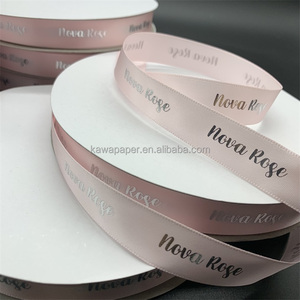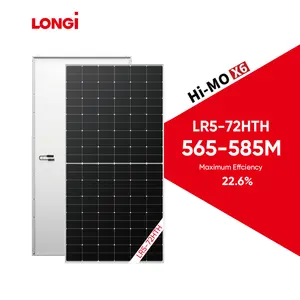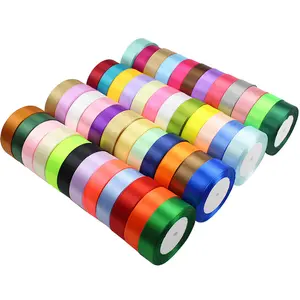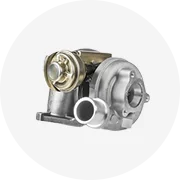Популярное в вашей отрасли






196 однотонная Двухсторонняя Атласная Лента, 100 ярдов в рулоне
1,03 ₽ - 4,09 ₽
Минимальный заказ: 1000 ярдов





OEM пользовательские размеры для подарочных сумок ручка фирменный логотип печать горячего тиснения корсажная лента
4,09 ₽ - 25,53 ₽
Минимальный заказ: 1000 ярдов







Миди ленты Заводская цена OEM подарочная лента Пользовательские размеры фирменный логотип печать Персонализированная атласная корсажная лента
1,03 ₽ - 5,11 ₽
Минимальный заказ: 2000 ярдов





Оптовая продажа, двусторонняя цветная тисненая черная полиэфирная атласная лента с логотипом
15,32 ₽
Минимальный заказ: 1000 ярдов



Двухсторонняя однотонная красная атласная лента 1 дюйм для упаковки подарков
3,07 ₽
Минимальный заказ: 2000 м







Шифоновая шелковая лента ручной работы с необработанными краями, шелковая шифоновая лента ручной работы с необработанными краями, оптовая продажа
62,29 ₽ - 66,37 ₽
Минимальный заказ: 5 рул.







Оптовая продажа, большой запас, 196 Цвет, 19 размеров, высокое качество, 4 см, 1,5 дюймов, атласная лента 38 мм, односторонний двухсторонний атласный
3,07 ₽ - 7,15 ₽
Минимальный заказ: 500 ярдов






Фабрика YAMA, OEM, пользовательские размеры, фирменный логотип, печатный атласный корсаж, индивидуальная лента
4,09 ₽ - 40,84 ₽
Минимальный заказ: 2000 ярдов






4 см однолицевая атласная лента, размер 1 1,5 2 дюйма доступен
81,68 ₽ - 102,10 ₽
Минимальный заказ: 50 рул.




Доступна шелковая атласная лента размером от 3 до 75 мм с черными фирменными логотипами и индивидуальной трафаретной печатью
3,07 ₽ - 10,21 ₽
Минимальный заказ: 500 ярдов






Цветная Термотрансферная лента размером на заказ, рекламный баннер, печатная лента 100 мм * 100 м
Готово к отправке
638,13 ₽
Минимальный заказ: 1 рул.
Доставка за штуку: 1 249,70 ₽






110 мм x 300 м, 110 мм x 450 м, термопереносные ленты под заказ, ленты для принтера зебры, восковые ленты
2,05 ₽ - 6,13 ₽
Минимальный заказ: 1 кв. м






Оптовая продажа с фабрики; Все размеры США класс очень мягкая на ощупь ткань, хлопок petersham лента для шляпа TCMJD65-500
Готово к отправке
6,13 ₽ - 46,97 ₽
Минимальный заказ: 1000 ярдов
Доставка за штуку: 4,09 ₽






Пользовательские размеры, логотип бренда, лента с золотым принтом, горячее тиснение, Корсажная атласная лента, подарочная лента для упаковки подарков
10,21 ₽ - 16,34 ₽
Минимальный заказ: 500 м






Атласная корсажная лента 1 дюйм, 2,5 см, с логотипом из серебряной фольги
3,07 ₽ - 5,11 ₽
Минимальный заказ: 3000 ярдов






Заказной размер серебряная фольга печатная атласная Grosgrain лента с пользовательским логотипом для бантов или подарочной упаковки
2 042,00 ₽
Минимальный заказ: 5 рул.






Ширина 25 мм 30 мм длина 100 м Размер ленты для горячего тиснения HP241B HP241date машина для кодирования партий Фольга для горячего кодирования
Готово к отправке
49,01 ₽ - 64,33 ₽
Минимальный заказ: 100 шт.
Доставка за штуку: 42,89 ₽






Атласная лента с напечатанным логотипом на заказ, ленты из 100% хлопка, размер логотипа, дизайнерская лента с напечатанным рисунком, индивидуальный Шелковый экран и т. д. 7-10 дней
Готово к отправке
1,03 ₽ - 51,05 ₽
Минимальный заказ: 100 ярдов
Доставка за штуку: 17,36 ₽


Розовая лента с размерами 4 дюйма, 2 дюйма, 1 и полдюйма, больше размеров, доступных по запросу
10,21 ₽ - 204,20 ₽
Минимальный заказ: 100 м





Термотрансферная восковая Резиновая лента TTR восковая Резиновая лента для штрих-кодов размером 110 мм x 300 м
Готово к отправке
816,80 ₽ - 867,85 ₽
Минимальный заказ: 20 рул.
Доставка за штуку: 488,04 ₽





Праздничные ленты, 1 дюйм, Золотая фольга, логотип, лента для влюбленных, атласная корсажная лента для подарочной упаковки
6,13 ₽ - 13,28 ₽
Минимальный заказ: 1000 ярдов

Различные размеры ABC назад в школу корсажная лента ширина двора Праздничная алфавитная лента банты для волос подарок рукоделие
12,26 ₽ - 43,91 ₽
Минимальный заказ: 50 ярдов






Мусульманский Рамадан, Мубарак, размер на заказ, лента для украшения
9,19 ₽ - 12,26 ₽
Минимальный заказ: 500 ярдов






Изготовление размеров под заказ из нейлоновой тафты этикеточная лента
Готово к отправке
190,93 ₽ - 236,88 ₽
Минимальный заказ: 100 кв. м
Доставка за штуку: 176,64 ₽





Оптовая продажа с фабрики, Двухсторонняя Атласная Лента с принтом всех цветов и размеров
2,15 ₽ - 3,27 ₽
Минимальный заказ: 10000 м






Изготовленный на заказ размер 100% хлопчатобумажная лента 100 ярдов/рулон
7,15 ₽ - 9,19 ₽
Минимальный заказ: 5000 м






H571 пользовательский размер золотой фольги лента восковая Смола Лента 600 метр
316,51 ₽ - 336,93 ₽
Минимальный заказ: 10 рул.






Размер 2,3*2,2 см, полиэфирная мини-лента, бант для одежды, аксессуары для одежды, нижнее белье, Подарочная коробка, декоративная лента
Готово к отправке
3,07 ₽ - 6,13 ₽
Минимальный заказ: 200 шт.
Доставка за штуку: 2,05 ₽






Горячая Распродажа, 100% чистая шелковая крепированная лента ручной работы, Прямая поставка с завода, 2,5 см, красочный размер, рождественский подарок, потертые края
Готово к отправке
204,20 ₽ - 224,62 ₽
Минимальный заказ: 1 рул.
Доставка за штуку: 1 784,71 ₽

Оптовая продажа, седельная простроченная корсажная лента разных размеров
Готово к отправке
7,15 ₽ - 22,47 ₽
Минимальный заказ: 460 м
Доставка за штуку: 11,24 ₽


















Оптовая продажа, индивидуальный дизайн, многоцветная однотонная корсажная лента с зубчатыми краями для бантов
15,32 ₽ - 28,59 ₽
Минимальный заказ: 500 ярдов






Производитель, различные размеры, Рождественский рулон Hessian, ручная работа, джутовая ткань, рулон ленты, натуральный тканый мешок, товары для обивки
5,11 ₽ - 20,42 ₽
Минимальный заказ: 100 м






25 мм Размер Подарочная атласная лента, декоративные упаковочные ленты
Готово к отправке
171,53 ₽ - 305,28 ₽
Минимальный заказ: 5 рул.
Доставка за штуку: 310,39 ₽




2017 Горячая Распродажа Золотой Серебряный металлик Рождественская Блестящая лента разного размера для упаковки подарков
1,03 ₽ - 51,05 ₽
Минимальный заказ: 3000 ярдов





6 см * 9 ярдов, несколько размеров, градиентные цветные сетчатые тюлевые ленты для бантов для волос
Готово к отправке
170,51 ₽
Минимальный заказ: 1 рул.
Доставка за штуку: 1 176,19 ₽






Ленты Гордон ленты однотонные атласные ленты Индивидуальный размер 100% полиэстер тканые края подарочная лента
5,11 ₽
Минимальный заказ: 1 ярд






Оптовая продажа, индивидуальные размеры, гладкая мягкая сплошная атласная лента из полиэстера, текстильная лента для упаковки
1,03 ₽
Минимальный заказ: 1000 ярдов
Самые популярные категории
О размеры ленты
Alibaba.com предлагает размеры ленты, 169216 видов. Вам доступны различные размеры ленты, в том числе устойчивого, высокая прочность на разрыв и переработанный. Вы можете выбрать различную упаковку: с одиночными шопкинами, двойной уход за кожей лица и мода размеры ленты. Кроме того, можно выбрать подарочная упаковка, одежда и свадебное платье размеры ленты.Такие размеры ленты могут быть атласная лента, нить.




















